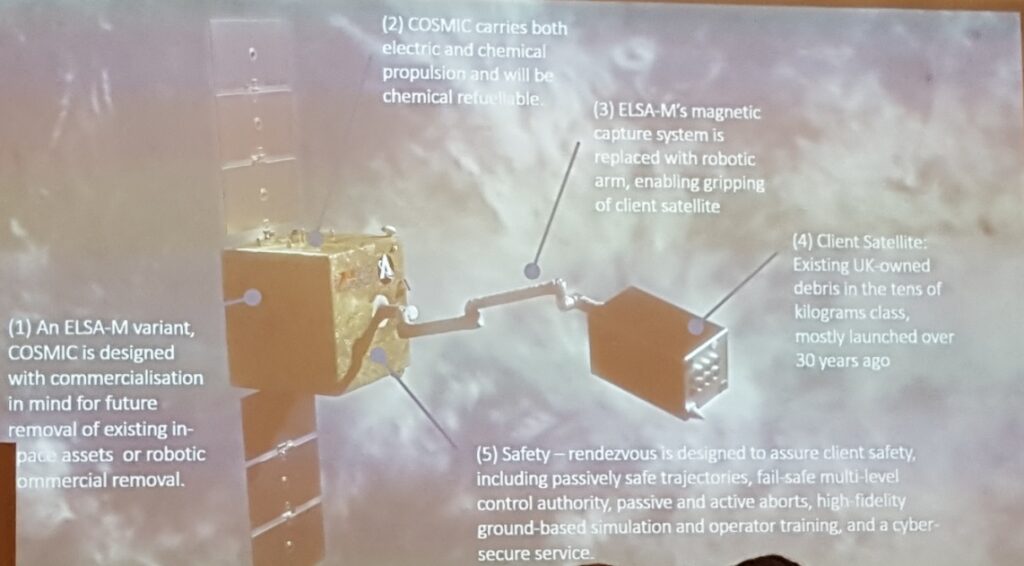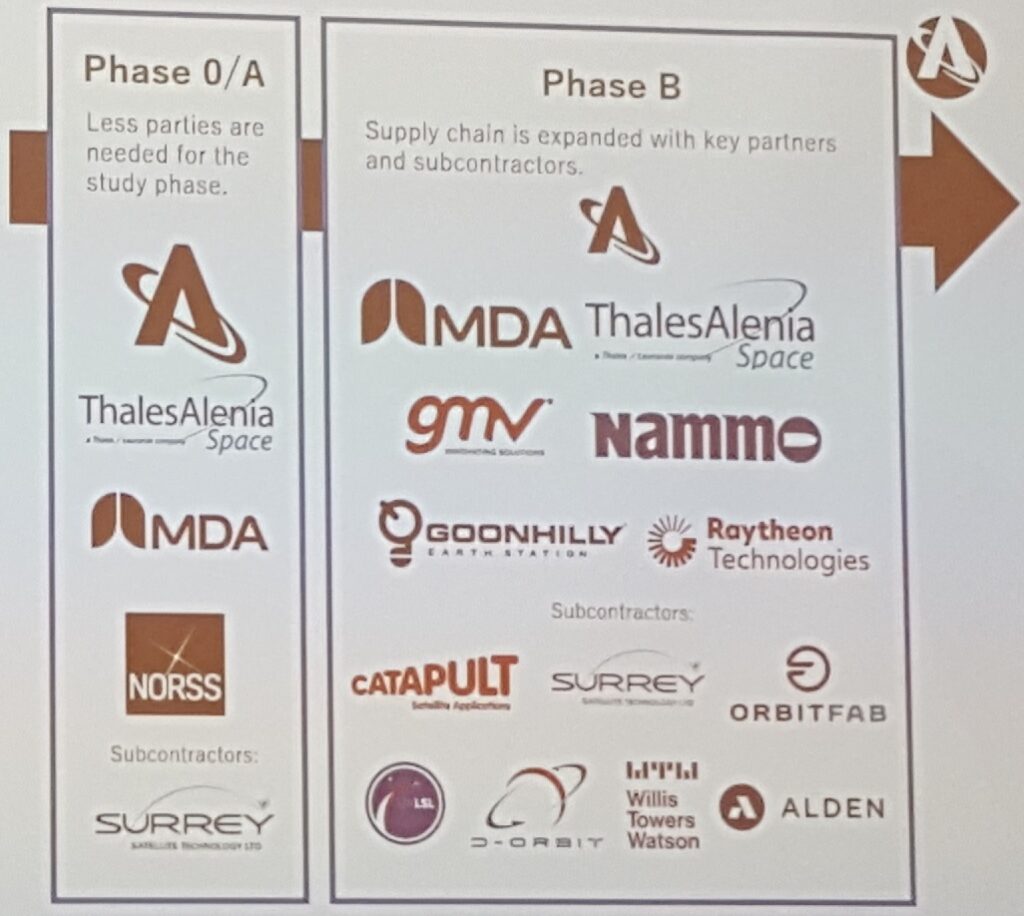Speaking at a Technical Session on 5 October here at the IAC 2023 Baku, Azerbaijan, Jason Forshaw of Astroscale UK introduced us to the COSMIC programme they are working on. COSMIC (Cleaning up Outer Space Mission through Innovative Capture) is a UKSA-sponsored ADR (Active Debris Removal) mission to de-orbit two aged British satellites started in 2021.

An Astroscale graphic showcasing key points of the COSMIC mission. Courtesy: Matthew Wilson
Forshaw explained that the consortium led by Astroscale is still in competition with another team to be selected to produce this mission, but he expects the decision to be made in early next year. This will enable for the winner to manufacture their satellite in time for a 2026 launch. As the mission is still under development the targets are not yet fixed, but it is likely the two selected will be from a selection including UoSAT-12 and UoSAT-3, -4. and -5. Out of these UoSAT-12 is the largest at 300 kg.
Astroscale intends to make the most out of concurrently building its ELSA-M mission for this project, as such these two spacecraft will share some characteristics. Astroscale’s approach to docking and capture is a magnetic mechanism making use of the prevalence of metallic adapter rings on in-orbit satellites. Additionally, with its ELSA-M mission partner, OneWeb, it is also hoping to promote the installation of “metallic plates” on mass-manufactured satellites in particular. However, not every potential target satellite will be so conveniently equipped which lead to Forshaw to explain his belief in the importance of inspection on arrival of any target satellite by the ADR unit. In-situ validation of the structural integrity of the target to ensure it has not sustained any damage whilst in orbit and that the intended docking point is not obscured is important for both user and client.

Current members of the Astroscale team. Courtesy: Matthew Wilson
Astroscale intends to equip the COSMIC satellite with both electric and chemical propulsion. Electric propulsion, utilising Krypton as fuel, will be used for the longer in-orbit moves like orbital transfer. Also carrying chemical, hydrazine, thrusters enables precise, quick, manoeuvres when in proximity of the targets. An additional aspect of having chemical propulsion enables contributions from other consortium members: Orbit Fab, TAS UK, and Nammo which are working on making sure COSMIC will be refuellable. Orbit Fab has developed its RAFTI interface to replace the fill/drain valves on equipped satellites. So equipped it will be possible for COSMIC to be docked with and refuelled (MW Comment: Forshaw emphasised that very selfishly COSMIC would not be able to refuel others however) potentially prolonging the mission for many years.








